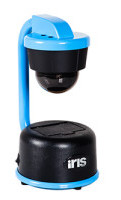As a WA STEM PD school on year 2 of our grant work, we get to use an IrisConnect LiveView camera. What we’ve learned from WA STEM research is that WA state teachers want effective Professional Development (PD) that includes observing models of instruction, having time to practice and reflect, get peer coaching, and receive real-time feedback. Of those surveyed 86% to 98% reported all four of the aforementioned PD to be important but only around half (or less than half with regards to getting peer coaching and real-time feedback) actually get to engage in those kinds of PD. WA STEM also found that 45% of WA teachers reported that their training has NOT prepared them to teach the new Math standards.
WA STEM looked at effective PD. They found some very interesting results.
When PD included ONLY presentation of information and theory only 5% of teachers achieved mastery. And only 5% of teachers actually transferred the skill(s) into their classroom practice.
When PD included presentation of information and theory plus modeling and demos of instructional practice only 10-20% of teachers achieved mastery. But STILL only 5% of teachers actually transferred the skill(s) into their classroom practice.
When PD included presentation of information and theory, modeling and demos, AND teachers got to practice and get feedback, 80-90% of teachers achieved mastery! But only 5-10% of teachers actually transferred the skill(s) into their classroom practice. Not much improvement there.
So what made a difference in teachers actually taking what they learned and using it in their classrooms?
When PD included presentation of information and theory, modeling and demos, AND teachers got to practice and get feedback, AND coaching and mentoring, 90% of teachers achieved mastery. And 80-90% of teachers actually transferred the skill(s) into their classroom practice!
Coaching and mentoring, with practice and real-time feedback, made a huge difference and was key to helping teachers implement what they were learning into their actual classrooms.
This is where the IrisConnect LiveView camera comes into our work with the WA STEM PD grant project.
How it works:
-
Schedule a live observation with your coach via the IRIS Connect platform
-
Using the 360 degree pan, tilt and zoom, the remote coach can navigate around the whole classroom
-
The coach can provide immediate feedback via the teacher’s ear-piece
-
And add time-stamped notes to the video
-
The video is stored in your private account, for reflection and sharing later on
I actually tried to use the LiveView camera last year. I worked with my Educational Service District’s (ESD) Science Coordinator, Jeff. We scheduled a few different times last year and he was able to connect to our classroom and manipulate the LiveView camera to observe me and my students during the lessons and labs we had agreed to have him observe. None of the virtual meetings were successful last year because of tech glitches. The biggest glitch was that I couldn’t hear him. Considering how real-time feedback is key in the coaching and mentoring, not being able to hear him was a big glitch. One thing I learned is that as the teacher of the observation and not the visitor, I should NOT click on microphone. That was one sure way of not hearing him and I learned that towards the end of the year. Quite embarrassing.
We tried again this year. We touched bases before the observation and discussed the lesson I was teaching and ways to align it to the NGSS. His help is very welcome because he is our region’s NGSS Science Leader trainer and having him observe my lesson without having to travel is awesome. We tested the system before the actual observation and thought we were ready but again I could not hear him. This time we didn’t let that stop us and since he was communicating with me that he was talking and I couldn’t hear him via texting me on my phone, we just communicated that way.
Another tech glitch I had forgotten to address is having my school’s tech guy add the LiveView to our trusted sites on the network. We hadn’t done that so didn’t get to record the visit! Ugh!
In the end, the whole process was completely worthwhile and helpful. Getting to discuss the lesson with Jeff before his “visit” was great as i got some ideas for a quick probe to give the kids before the lesson. Jeff then got to see how the kids responded to the probe during his visit. Communicating via texting was slow but I was able to get some real-time feedback from Jeff. He took notes and shared them with me so I was also able to reflect on the lesson afterward as well. We are going to try it again and we are hoping to solve the audio problem and record the session as well!
If you are familiar with the STC/MS kit, Energy, Machines, and Motion, Jeff and I were discussing the move from Inquiry 6.2 to Inquiry 6.3 in the Lesson 6 Friction lab part of the kit. Jeff helped me design the following assessment probe to start our discussion and preparation for the lab on testing how the surface area of a wood block affects its sliding friction:
Have you tried a live coaching session with this technology? Did it work for you? Leave me a comment and let me know if you made it work.








































































